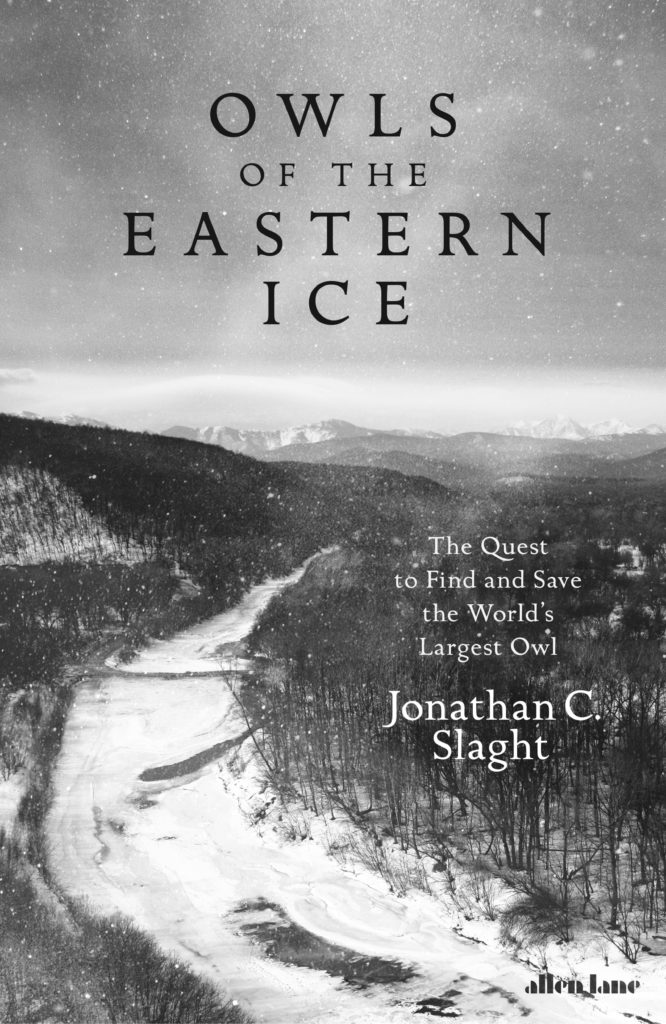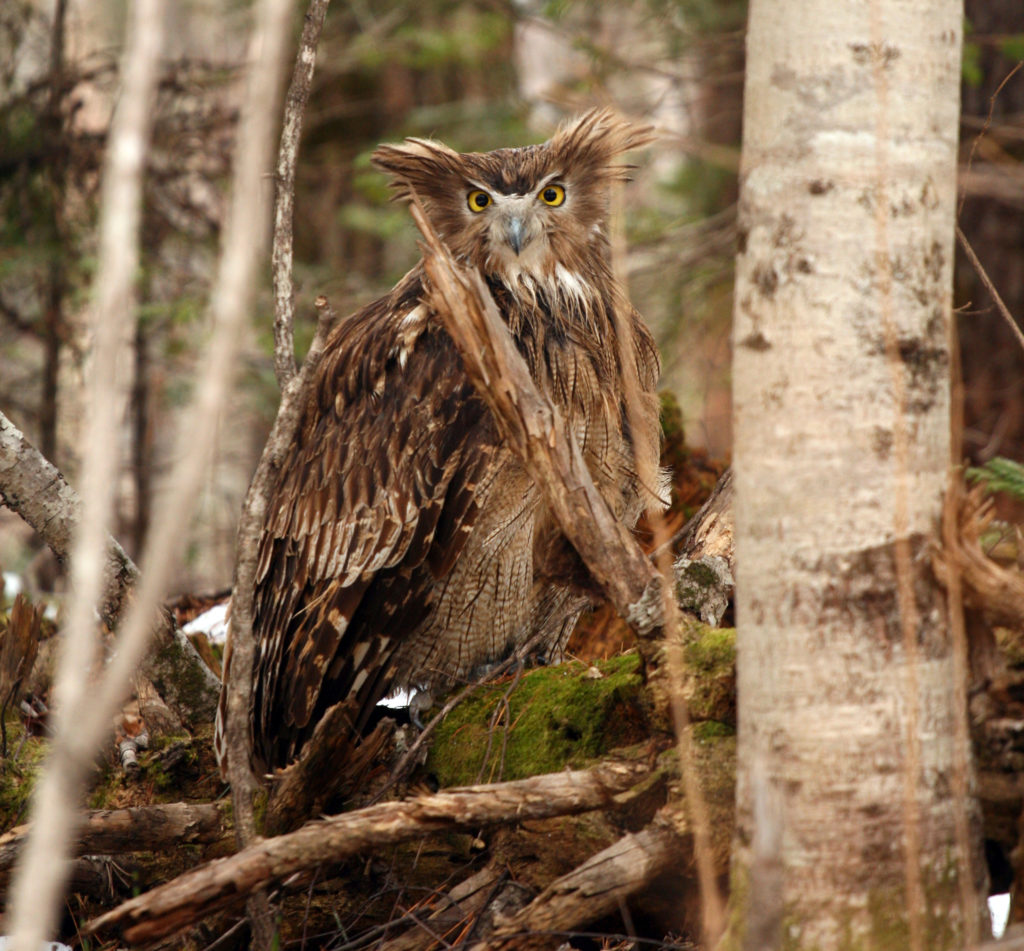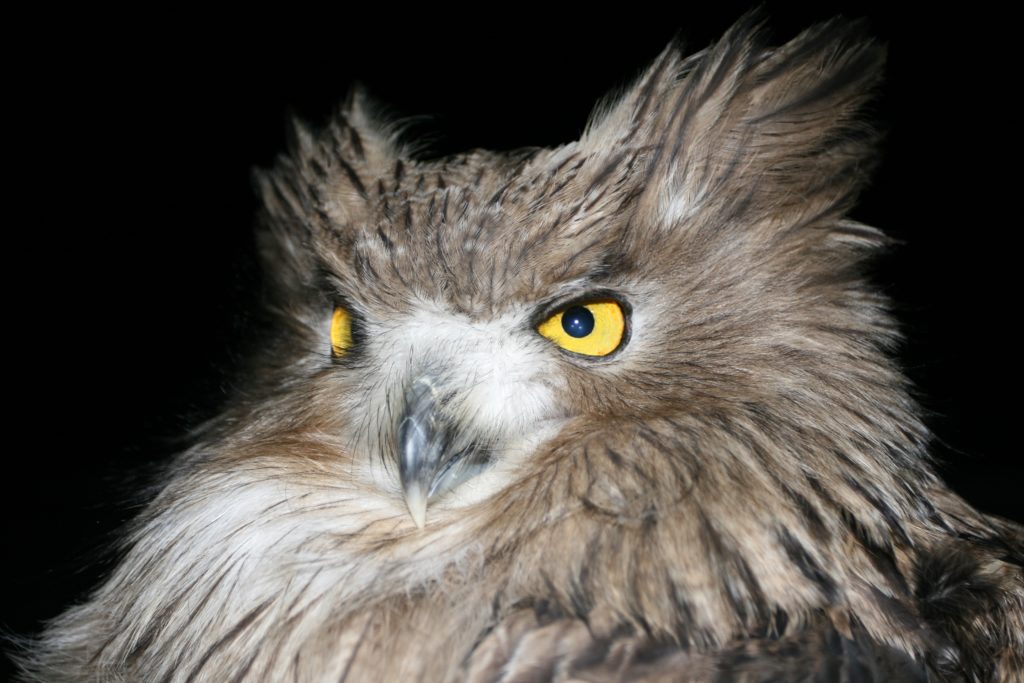Recently published by Allen Lane, Owls of the Eastern Ice chronicles Jonathan C. Slaght’s quest to find — and safeguard from extinction — the world’s largest species of owl. Tom Parfitt reviews.

In the wilds of Russia’s Far East, it is hard not to feel a merging of human and animal, of animal and landscape.
Here, where Russia and China bristle either side of the Ussuri River and a finger of North Korea reaches towards Vladivostok, is Primorye, or the By-The-Sea-Land.
Peter Matthiessen, studying the tigers who live in its snowy woods in the 1990s, imagined Primorye as a great claw of Siberia, curving south along the Pacific rim, from the vast delta of the Amur river to the North Korean border. Jonathan Slaght, in his remarkable new memoir Owls of the Eastern Ice, sees the region as a coastal talon of land hooking into the belly of Northeast Asia.
Slaght’s book is the story of his four-year project to locate, study and capture the Blakiston’s fish owl, a little-known and endangered species that inhabits remote stretches of riparian forest at this eastern brink of Russia.
An American ornithologist doing a PhD at the University of Minnesota, his plan is to tag the birds and study their movements, to identify the features of the landscape they need to survive, and to develop a conservation strategy: in short, to save the species.
Slaght’s writing is brisk while endowed with some delightful phrase-making. From page one, we know we are in capable hands when the fish owl is introduced as ‘too big and too comical to be a real bird, as if someone had hastily glued fistfuls of feathers to a yearling bear, then propped the dazed beast in the tree’.
This is clearly an exceptional creature: its electric-yellow eyes, its two-metre wingspan, its talons raking the snow like a cowboy’s spurs. Crouched on a nest in a decaying chosenia, a female is so well camouflaged that it seems to become one with the trees around it. For Slaght, it is a like ‘a beautiful thought’ that he can’t quite articulate.

Yet, satisfyingly, this bird — the world’s largest owl, and one of its most elusive — defines attempts to corral its image. One of Slaght’s new assistants daydreams about what his first encounter will look like: a majestic shape swooping from a frosty tree to pluck a salmon from a mountain stream. Instead, the assistant spots his first Blakiston’s by a roadside, sitting bedraggled on a discarded truck tyre and choking down a frog.
As much as to the bird itself, this book is an encomium to the endeavour which is fieldwork, at times exhilarating and others terrifyingly mundane.
Setting traps to catch the owls and attach transmitters, Slaght and his colleagues — three other men — spend weeks sleeping in the back of a truck fitted with benches and a wood stove, as outdoor temperatures drop to minus 30 Celsius. In the fug of tinned farts (one imagines), they banish a snoring colleague to a tent.
Camaraderie is also evident. Slaght adopts the forgiving Russian attitude to drunks and eccentrics. Lads drop by unbidden to share a bottle of 95 percent ethanol with the ornithologists, and a hermit who offers his cabin as a place to sleep is humoured when he burbles about Atlantis and men in white robes living under the mountain.
The greatest explorer of Primorye was an army officer and naturalist named Vladimir Arsenyev who mounted a series of expeditions into the region’s forest-cloaked Sikhote-Alin mountain range at the turn of the 20thcentury.
Arsenyev wrote two popular books featuring his journeys with a taiga denizen by the name of Dersu Uzala. Dersu was a hunter from the Nanai tribe who had lost his family to smallpox, and lived by his rifle, sleeping out in the woods.
In Arsenyev’s telling, Dersu’s worldview was deeply animistic. ‘Him all same man, only different shirt,’ the Nanai says of a wild boar.
Some linguists have suggested that Arsenyev poorly understood Chinese pidgin Russian and mistakenly exaggerated Dersu’s anthropomorphising tendency. All the same, the few thousand indigenous Nanai and Udege who continue to live in the Far East nurture a sense of themselves as sharing the forest with other predators whose spirits can be disturbed by disrespectful human behaviour.

Five years ago, keen to be in some of the same places as Arsenyev and Dersu, I spent a week travelling up the Bikin river in Primorye with two Nanai hunters, Vasily and Misha. They used a lightweight dugout to advance silently down a woodland channel, and shoot a single deer under cover of dark, before distributing the meat to friends and the needy.
One night by our campfire on a spit of shingle, Misha talked about the time he felt a tiger’s eyes on his back in the forest, and spoke out loud to the beast without turning or raising his rifle, saying: “I am only a hunter like you, on his way home. I mean no harm.”
In the end, Dersu Uzala was killed by brigands close to a train station at the edge of the forest, in what Arsenyev perceived as a pernicious effect of the march of “progress”.
A century later, roads and logging trucks advance further into the taiga, threatening the domain of both the fish owl and the Nanai.
Yet Vasily and Misha, I know, are not helpless victims. They have adapted smartly to change. As for the fish owl, Slaght believes that it too will not go down without a fight.
Primorye, he says, is a place where humans and wildlife still share the same resources. At the end of his study, he develops a conservation plan for the Blakiston’s fish owl that takes this into account. Timber companies are persuaded to construct earth berms across forest roads after they are done extracting timber, reducing human interference. Plastic barrels are attached to riverside trees to create nest sites where the fishing is good but no hollows present themselves.
The rare fish owls are weathering typhoons, plunging temperatures and mobs of crows. Slaght continues to monitor human threats. ‘Like the owls,’ he says, ‘we’ll have to stay vigilant.’
*
Owls of the Eastern Ice: The Quest to Find and Save the World’s Largest Owl is out now, and available here, priced £16.99.
Tom Parfitt is the Moscow Correspondent of The Times. He is interested in the intersection of nature conservation and indigenous livelihoods in Russia. You can follow him on Twitter here.